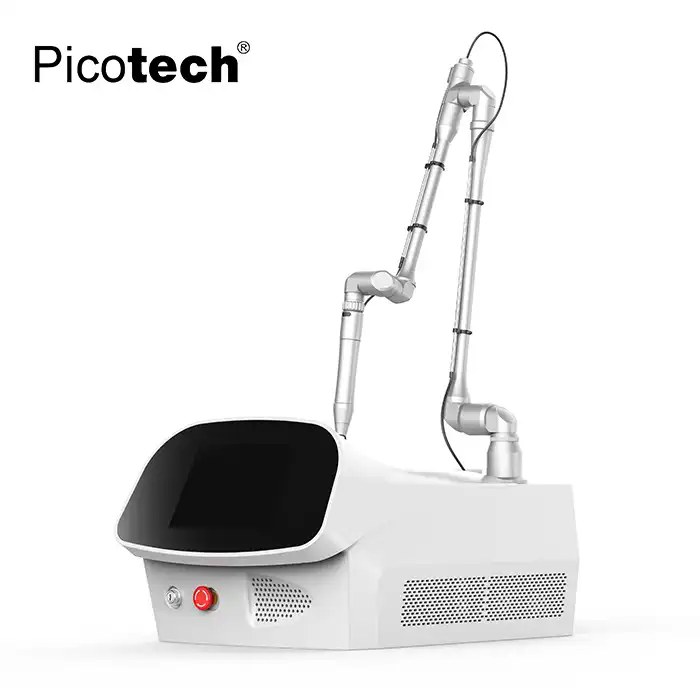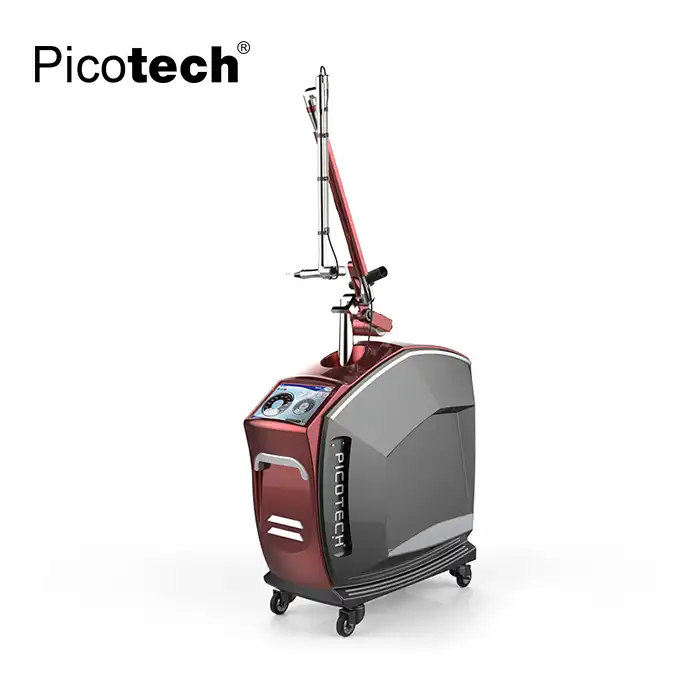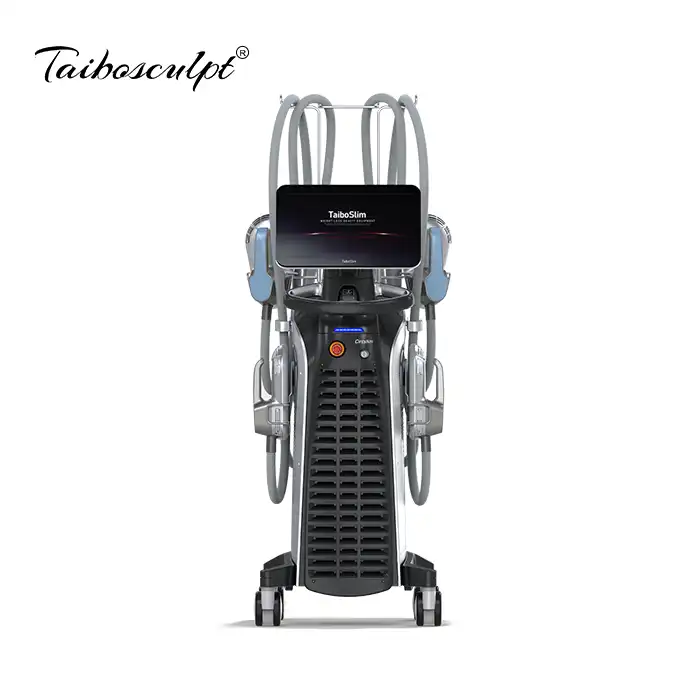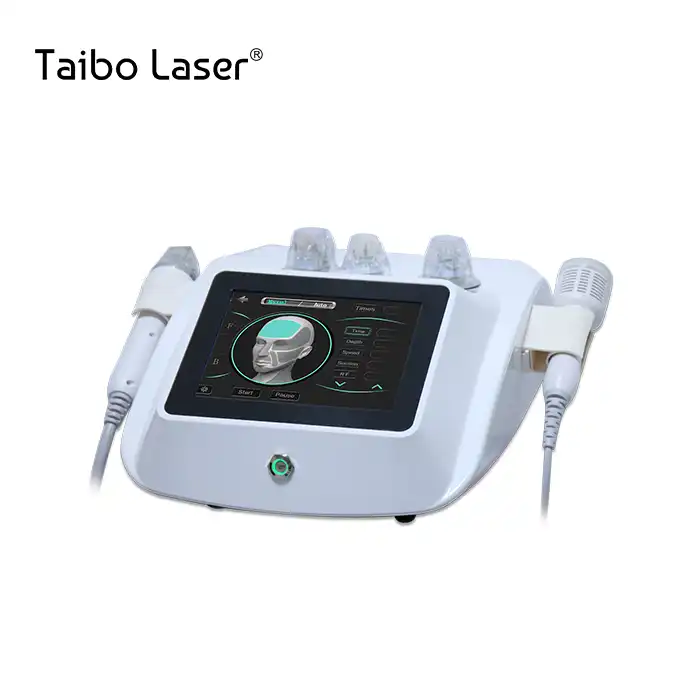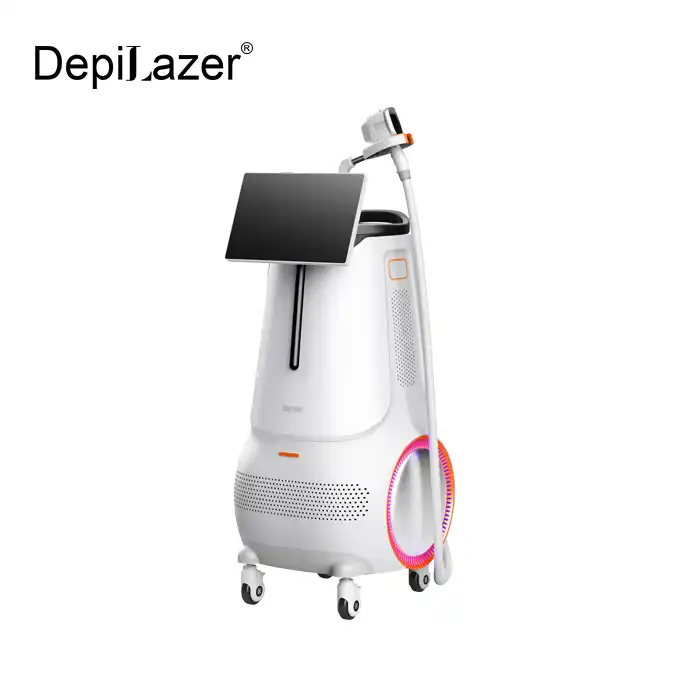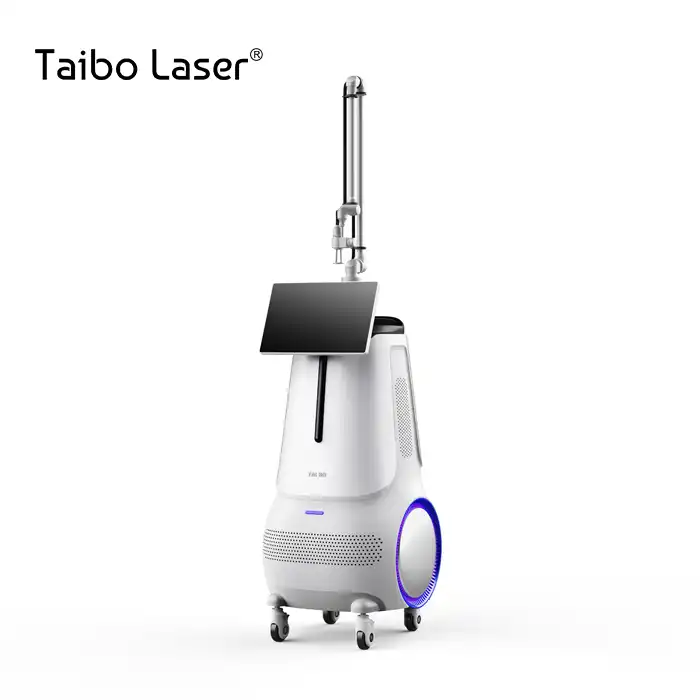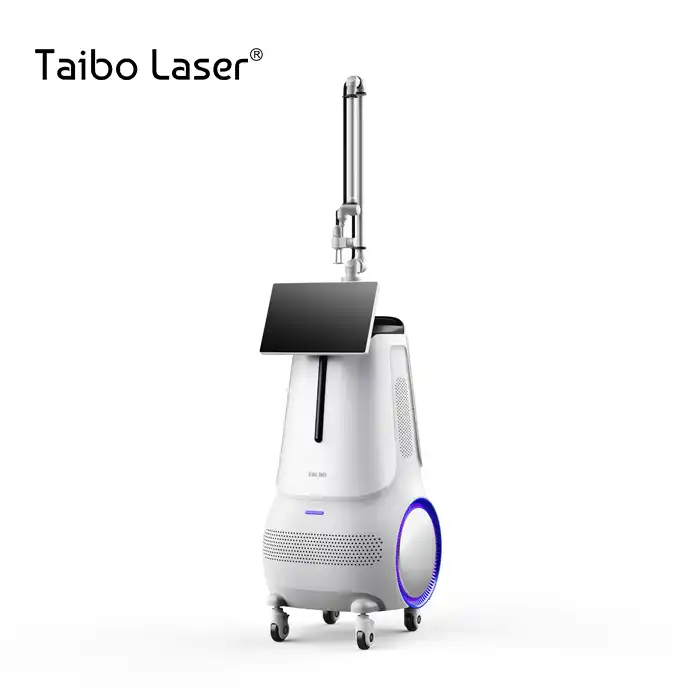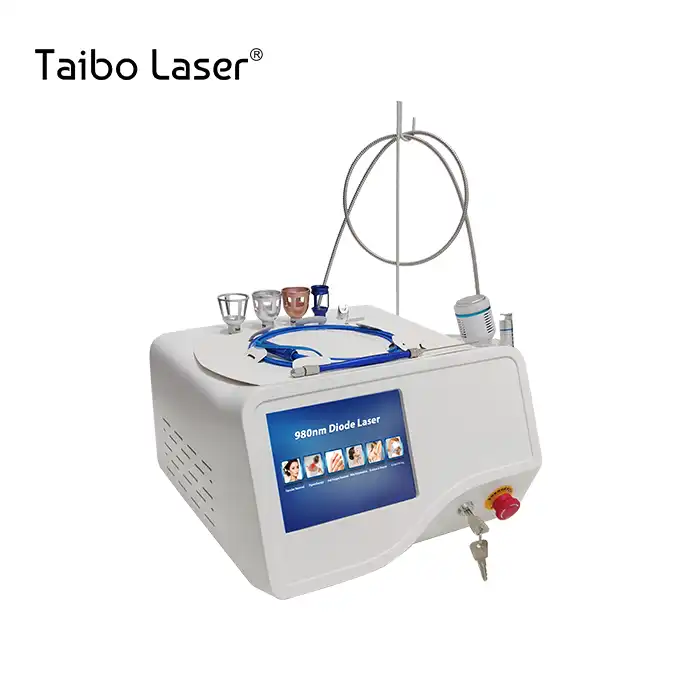
Fractional CO2 Laser - Skin Tightening Treatment
2025-10-14 09:23:47
Are you struggling with stubborn wrinkles, sagging skin, or acne scars that refuse to fade despite trying countless creams and treatments? You're not alone in this frustration. The fractional co2 laser represents a breakthrough solution for skin tightening that addresses these persistent concerns through advanced medical technology. This comprehensive guide reveals how this innovative treatment works, what results you can expect, and why it has become the gold standard for professional skin rejuvenation and tightening procedures worldwide.
Understanding Fractional CO2 Laser Technology
The fractional co2 laser operates on a scientifically proven principle that revolutionizes how we approach skin tightening and rejuvenation. Unlike traditional ablative lasers that remove entire layers of skin, this advanced technology creates thousands of microscopic treatment zones while leaving surrounding tissue intact. The CO2 laser wavelength of 10,600nm specifically targets water molecules within skin cells, making it exceptionally effective for precise tissue vaporization and collagen stimulation. When the fractional co2 laser beam penetrates the skin, it creates what specialists call Micro Thermal Zones (MTZ). These precisely controlled columns of thermal energy extend deep into the dermis, triggering the body's natural healing response. The untreated tissue between these micro-zones acts as a reservoir of healthy cells that accelerate recovery, significantly reducing downtime compared to older laser technologies. This fractional approach delivers maximum results with minimal tissue damage, making it safer and more comfortable for patients seeking skin tightening solutions. The science behind this technology lies in its dual action mechanism. First, the laser creates controlled epidermal ablation, removing damaged surface layers and revealing fresher skin beneath. Simultaneously, the thermal energy stimulates fibroblasts deep within the dermis to produce new collagen and elastin fibers. This collagen remodeling process continues for months after treatment, delivering progressive skin tightening and texture improvement. The fractional co2 laser wavelength ensures high absorption by water content while maintaining low absorption by melanin and hemoglobin, minimizing risks of pigmentation changes and making it suitable for various skin types.
-
How Fractional CO2 Laser Achieves Superior Skin Tightening?
The effectiveness of fractional co2 laser for skin tightening stems from its ability to create controlled thermal injury at precise depths. Modern systems like those manufactured by Xi'an Taibo Laser Beauty Company feature adjustable parameters including spot size (≥0.1mm focus), energy density (1-40W actual power), pulse duration, and penetration depth. These customizable settings allow practitioners to tailor treatments to individual patient needs, whether addressing superficial fine lines or deeper structural laxity requiring more aggressive tightening. The treatment works through a process called thermal coagulation. As the laser energy heats tissue to specific temperatures, it causes immediate collagen contraction, providing an instant tightening effect visible right after treatment. More importantly, this controlled thermal damage initiates a wound healing cascade that continues producing new collagen for six to twelve months post-treatment. During this remodeling phase, patients notice progressive improvements in skin firmness, elasticity, and overall texture. The fractional co2 laser essentially turns back the clock on aging by jumpstarting your skin's natural regenerative processes. Clinical studies demonstrate that fractional co2 laser treatments can improve skin laxity by up to forty percent after a single session, with optimal results achieved through a series of two to three treatments spaced several months apart. The technology's precision allows treatment of delicate areas including around the eyes, mouth, and neck where skin tightening is often most desired. By carefully controlling the depth, density, and pattern of laser delivery, skilled practitioners achieve dramatic tightening results while maintaining natural-looking outcomes that enhance rather than alter facial features.
Key Benefits and Applications of Fractional CO2 Laser Treatment
The fractional co2 laser offers an impressive range of clinical applications that extend far beyond basic skin tightening. For individuals concerned about facial aging, this technology effectively addresses multiple issues simultaneously. It reduces wrinkles around the eyes, crow's feet, and expression lines formed from years of facial movement and environmental damage. The treatment significantly improves skin texture by smoothing rough areas, minimizing enlarged pores, and creating a more refined complexion that reflects light more evenly. Acne scars and traumatic scarring respond remarkably well to fractional co2 laser resurfacing. The technology breaks down rigid scar tissue while promoting new collagen formation that fills depressed areas and levels the skin surface. Patients with ice pick, boxcar, or rolling acne scars often see dramatic improvement after a treatment series. Similarly, surgical scars, burn scars, and stretch marks become less noticeable as the fractional co2 laser stimulates tissue remodeling in these affected areas. The precise control offered by modern fractional systems allows practitioners to target specific scar types with appropriate energy levels and treatment patterns for optimal correction. Pigmentation irregularities including age spots, sun damage, and melasma can be effectively treated with fractional co2 laser technology. The ablative action removes pigmented surface layers while the thermal stimulation promotes even melanin distribution in regenerating skin. However, careful parameter selection and appropriate pre-treatment protocols are essential when addressing pigmentation concerns, particularly in darker skin types where post-inflammatory hyperpigmentation risks exist. The fractional approach minimizes these risks by preserving healthy tissue that supports proper healing and reduces inflammation.
-
Advanced Applications Beyond Traditional Skin Rejuvenation
Modern fractional co2 laser systems incorporate specialized treatment modes that expand their clinical utility significantly. Vaginal rejuvenation has emerged as an important application, with the fractional co2 laser offering safe, effective solutions for vaginal laxity, dryness, and stress urinary incontinence. The laser stimulates collagen production in vaginal tissues, improving tone, elasticity, and moisture retention. This non-surgical approach provides women with renewed confidence and improved quality of life without the risks and recovery time associated with surgical procedures. Vulvar treatments represent another specialized application where the fractional co2 laser demonstrates unique advantages. Conditions like vulvar lichen sclerosus, a chronic inflammatory disorder causing tissue thinning and discomfort, respond positively to fractional laser therapy. The treatment promotes tissue regeneration and improves elasticity in affected areas, reducing symptoms and enhancing patient comfort. Additionally, vulvar lightening treatments address hyperpigmentation concerns in intimate areas, using carefully controlled laser parameters to reduce excess melanin safely and effectively. The fractional co2 laser also proves valuable for treating periorbital wrinkles, one of the most challenging areas in aesthetic medicine. The delicate skin around the eyes requires extremely precise energy delivery to achieve tightening without complications. Advanced systems feature specialized handpieces and treatment protocols designed specifically for periorbital rejuvenation, delivering impressive results in reducing fine lines, crepey texture, and mild to moderate eyelid laxity. Similarly, perioral lines, those vertical wrinkles around the mouth that develop from repeated muscle movement and smoking, respond excellently to fractional co2 laser resurfacing when treatment parameters are optimized for this sensitive facial area.
Technical Specifications and Treatment Parameters
Understanding the technical capabilities of modern fractional co2 laser systems helps practitioners optimize treatment outcomes and patients make informed decisions about their care. Professional-grade equipment like the systems manufactured by Xi'an Taibo Laser Beauty Company incorporate sophisticated features that enhance both safety and efficacy. The CO2 fractional laser operates at a wavelength of 10,600nm with adjustable power output ranging from 1W to 40W actual power, providing flexibility to treat various skin conditions and depths. These advanced systems offer multiple output modes including dot matrix mode for traditional fractional treatments, pulse mode with long pulse and ultra pulse options for different tissue responses, and specialized private and vulvar modes for intimate area treatments. The cooling system plays a crucial role in patient comfort and safety. Water cooling technology maintains optimal handpiece temperature throughout procedures, preventing thermal buildup that could cause discomfort or tissue damage. This consistent cooling allows practitioners to deliver higher energy levels safely, achieving better results in fewer treatment sessions. The light guide system utilizing a seven-joint articulating arm provides exceptional maneuverability and precise beam delivery to all treatment areas, including hard-to-reach locations on the face and body. An indicating light wavelength of 635nm helps practitioners visualize the treatment area and ensure accurate targeting. The spot size adjustability down to 0.1mm focus enables extremely precise treatment of specific concerns like individual wrinkles or small scars. Modern fractional co2 laser systems feature intuitive 10.4-inch touch color screens that simplify parameter selection and provide real-time feedback during treatments.
-
Clinical Advantages of Advanced Fractional CO2 Laser Technology
The technical sophistication of modern fractional co2 laser systems translates directly into clinical advantages that benefit both practitioners and patients. Adjustable pulse width allows practitioners to modify how long energy is delivered to tissue, influencing the thermal response and treatment depth. Shorter pulses create more ablative effects ideal for surface resurfacing, while longer pulses generate deeper thermal penetration suitable for collagen remodeling and tightening. This flexibility enables customization of every treatment to match individual patient needs and specific skin conditions. Scanning pattern options represent another crucial technical feature. Non-sequential scanning distributes laser impacts in a random pattern rather than linear rows, reducing heat accumulation in any single area and minimizing patient discomfort. Maximum spacing scanning increases the distance between treatment zones, leaving more untreated tissue to support faster healing when treating sensitive areas or patients with compromised healing capacity. These sophisticated scanning algorithms optimize the balance between efficacy and safety, particularly important when performing aggressive resurfacing or treating large surface areas. The fractional co2 laser density regulation allows precise control over treatment intensity by adjusting how many laser columns are delivered per square centimeter. Higher densities provide more aggressive resurfacing suitable for severe wrinkles, deep scars, or significant sun damage, while lower densities work well for maintenance treatments, sensitive areas, or patients seeking minimal downtime. Combined with adjustable energy levels and penetration depth control, practitioners can fine-tune treatments to achieve optimal results for each unique clinical scenario. This level of customization explains why fractional co2 laser technology has become the preferred choice for professional skin tightening and rejuvenation worldwide.

Treatment Process and Patient Experience
Understanding what to expect during and after fractional co2 laser treatment helps patients prepare appropriately and achieve optimal results. The treatment process begins with a thorough consultation where practitioners assess skin condition, discuss patient goals, review medical history, and determine appropriate treatment parameters. Photographs document baseline appearance for comparison with post-treatment results. Patients receive detailed pre-treatment instructions including avoiding sun exposure, discontinuing certain medications or skincare products, and following any prescribed pre-treatment regimens to optimize healing and minimize complication risks. On treatment day, the skin is thoroughly cleansed and a topical anesthetic cream applied to ensure patient comfort during the procedure. While fractional co2 laser treatments are less painful than traditional ablative lasers, the thermal energy does create a sensation that most patients describe as mild to moderate heat or prickling. The anesthetic cream significantly reduces discomfort, and many modern systems incorporate cooling technologies that further enhance comfort. Treatment duration varies based on the size and number of areas addressed, typically ranging from thirty minutes for focused treatment of specific concerns to ninety minutes for full face and neck resurfacing. During treatment, the practitioner systematically delivers the fractional co2 laser energy across treatment areas using the parameters established during consultation. Multiple passes may be performed in areas requiring more aggressive treatment, with careful monitoring of skin response to ensure safety. Immediately after treatment, the skin appears red and may have pinpoint bleeding at laser impact sites. A cooling mask or cold air application provides immediate relief, and post-treatment skincare products are applied to support healing. Patients receive comprehensive aftercare instructions detailing proper wound care, expected healing timeline, and signs requiring medical attention.
-
Recovery Timeline and Post-Treatment Care
The fractional approach significantly reduces recovery time compared to traditional ablative CO2 laser treatments, but patients should still expect a healing period requiring specific care protocols. During the first twenty-four to forty-eight hours, treated skin appears intensely red and may feel tight, warm, or slightly swollen. This acute inflammatory response represents normal healing and subsides quickly. Patients apply prescribed ointments or healing serums regularly to keep skin moist and protected, avoiding any drying or crusting that could impair healing or increase scarring risk. By day three to five, the treated skin begins to darken as microscopic epidermal crusts form around each laser impact zone. This bronzed appearance is temporary and represents the ablated tissue preparing to slough off. Patients must resist any temptation to pick or scrub these areas, allowing natural exfoliation to occur. Gentle cleansing with mild, non-foaming cleansers and continued application of healing products supports this process. Most patients can return to work and normal activities around day five to seven, though redness may persist requiring mineral makeup for coverage if desired. Complete healing typically occurs within seven to ten days for moderate treatments, with more aggressive resurfacing requiring up to two weeks. Once the bronzed layer has fully exfoliated, fresh pink skin emerges with immediately visible improvement in texture and tone. This pink color gradually fades to normal over the following two to four weeks. The fractional co2 laser collagen remodeling process continues for months after visible healing completes, delivering progressive improvement in skin firmness, elasticity, and wrinkle reduction. Optimal results become apparent around three to six months post-treatment, with continued subtle enhancement for up to one year.
Safety Considerations and Candidate Selection
While fractional co2 laser technology offers impressive results for skin tightening and rejuvenation, proper candidate selection ensures optimal outcomes and minimizes complication risks. Ideal candidates have mild to moderate skin laxity, wrinkles, scars, or textural irregularities they wish to improve without undergoing surgery. Patients should have realistic expectations understanding that while results can be dramatic, they develop gradually through the natural healing process. Good general health, absence of active skin infections or inflammation in treatment areas, and commitment to following pre and post-treatment protocols all contribute to successful outcomes. Certain conditions require special consideration or may contraindicate fractional co2 laser treatment. Active acne should be controlled before treatment, though post-acne scarring can be safely addressed. Patients with a history of abnormal scarring, keloids, or poor wound healing require careful evaluation and possibly modified treatment protocols. Individuals taking medications affecting healing or photosensitivity need medical clearance before proceeding. Pregnancy and breastfeeding represent relative contraindications, with most practitioners recommending postponing treatment until after this period. Patients with very dark skin types need careful assessment as higher melanin content increases post-inflammatory hyperpigmentation risks, though modern fractional technology has made treatment safer for diverse skin types than older laser systems. Smoking significantly impairs healing and increases complication risks following fractional co2 laser treatment. Nicotine constricts blood vessels reducing oxygen delivery to healing tissues, potentially causing prolonged recovery, poor results, or even tissue necrosis in severe cases. Patients who smoke should quit at least four weeks before and after treatment to optimize healing. Similarly, certain supplements and medications including aspirin, ibuprofen, vitamin E, and fish oil can increase bleeding and bruising risks. Practitioners provide detailed lists of substances to avoid before treatment and when they can be safely resumed during recovery.
-
Potential Risks and How to Minimize Them
Understanding potential risks associated with fractional co2 laser treatment allows patients to make informed decisions and recognize signs requiring medical attention. When performed by properly trained practitioners using quality equipment like systems from Xi'an Taibo Laser Beauty Company with appropriate safety certifications, serious complications are rare. However, all medical procedures carry inherent risks that patients should understand. Common temporary side effects include redness, swelling, and discomfort during initial healing. These expected responses resolve without intervention as healing progresses. Infection represents a potential complication if proper wound care protocols aren't followed meticulously. The microscopic wounds created by fractional co2 laser treatment provide potential entry points for bacteria if skin isn't kept clean and appropriately moisturized during healing. Signs of infection include increasing pain, warmth, swelling, purulent drainage, or fever. Any of these symptoms require immediate medical evaluation and may necessitate antibiotic treatment. Practitioners sometimes prescribe prophylactic antibiotics for patients at higher infection risk or following aggressive treatments. Additionally, patients with history of herpes simplex virus may experience viral reactivation triggered by laser trauma. Prophylactic antiviral medication effectively prevents this complication when taken according to prescribed protocols. Post-inflammatory hyperpigmentation occurs when healing skin produces excess melanin in response to treatment trauma. This risk is higher in darker skin types, patients with hormonal influences like pregnancy or birth control pills, and those with excessive sun exposure before or after treatment. Careful parameter selection, appropriate pre-treatment skin preparation with melanin-suppressing agents, and strict sun avoidance during healing minimize this risk. If hyperpigmentation develops, it typically responds to topical lightening agents and time, gradually fading over several months. Hypopigmentation, the opposite concern where skin loses pigment, is rare with fractional treatments due to preservation of healthy tissue between laser columns but can occur with excessive energy or overlapping treatment zones. These complications underscore the importance of choosing experienced practitioners using quality equipment with proper safety features and certifications.
Why Choose Xi'an Taibo Laser CO2 Fractional Laser Systems?
The fractional co2 laser market includes numerous manufacturers, but not all systems offer equivalent quality, reliability, or clinical results. Xi'an Taibo Laser Beauty Company stands out as a China fractional co2 laser manufacturer with over fifteen years of production and export experience serving more than 180 countries worldwide. This extensive experience translates into systems refined through continuous feedback from practitioners globally, incorporating features that address real-world clinical needs. The company maintains comprehensive facilities including three dedicated production departments, procurement, warehouse management, quality inspection, packaging, professional design, R&D, and after-sales teams ensuring every aspect of product development and support meets rigorous standards. Technical excellence defines Xi'an Taibo fractional co2 laser systems. As a China fractional co2 laser factory with national invention patents, the technology offers superior reliability and safety performance compared to generic alternatives. The systems achieve fractional laser maximum width of 30mm enabling efficient treatment of large areas, while precise lattice density regulation and penetration depth control ensure accurate targeting of specific skin layers. High power pulse stable laser technology delivers consistent energy throughout treatments, achieving faster procedures and shorter healing times. Multiple handpiece options expand treatment versatility, while system upgrade capabilities ensure equipment remains current as technology advances. Quality assurance represents a cornerstone commitment at Xi'an Taibo Laser Beauty Company. Every fractional co2 laser for sale undergoes rigorous quality inspection before shipping, ensuring customers receive properly functioning equipment that performs according to specifications. The company holds multiple certifications including CE certificate for European compliance, ISO13485 for medical device quality management, SGS certification, EMC, LVD, and Hague certification, with FDA approval processes underway. These certifications provide peace of mind that systems meet international safety and performance standards. Additionally, comprehensive technical documentation, user manuals, and training materials accompany each system, facilitating rapid staff training and confident operation.
-
Comprehensive Support and Customization Options
Choosing a China fractional co2 laser supplier involves more than just purchasing equipment; ongoing support determines long-term success and satisfaction. Xi'an Taibo Laser Beauty Company provides a comprehensive two-year warranty covering all machine parts that fail due to non-human reasons, with free replacement parts supplied promptly. This warranty far exceeds industry standards and reflects the company's confidence in product reliability. The professional after-sales team offers 24-hour online service helping customers resolve technical questions or operational issues quickly, ensuring minimal disruption to practice operations. Training support ensures practitioners can maximize their investment in fractional co2 laser technology. Xi'an Taibo provides detailed instruction manuals, operation videos, and live video training sessions until users feel completely confident operating the equipment. For customers purchasing multiple units or establishing large clinics, the company offers on-site training and installation services bringing expert technicians directly to your facility. This hands-on training accelerates staff proficiency and ensures proper equipment setup, optimization, and maintenance protocols from day one. Customization options allow businesses to differentiate their services and strengthen brand identity. As a China fractional co2 laser wholesale provider offering OEM/ODM services, Xi'an Taibo works with clients to customize equipment according to specific requirements. Logo placement, interface design, color selection for bulk purchases, and even language customization for single units can all be accommodated. This flexibility enables clinics, medical spas, and distributors to offer branded equipment that reinforces their professional image and creates cohesive treatment environments. High quality fractional co2 laser equipment combined with customization options provides competitive advantages in increasingly crowded aesthetic medicine markets.
Conclusion
Fractional co2 laser technology represents the most effective non-surgical solution for comprehensive skin tightening and rejuvenation, addressing multiple concerns through scientifically proven mechanisms that stimulate natural collagen production while removing damaged tissue. Understanding the technology, treatment process, and equipment quality differences empowers informed decisions that optimize results and satisfaction.
Cooperate with Xi'an Taibo Laser Beauty Company
Partner with Xi'an Taibo Laser Beauty Company, your trusted China fractional co2 laser manufacturer and China fractional co2 laser supplier offering High Quality fractional co2 laser systems at competitive fractional co2 laser price points. With over 15 years of manufacturing excellence, comprehensive certifications, and a professional support team, we provide fractional co2 laser for sale backed by industry-leading warranties and training. Whether you're establishing a new practice or upgrading existing equipment, our OEM/ODM services and dedicated after-sales support ensure your success. Contact susan@taibobeauty.com today to discuss your specific needs and discover why practices in over 180 countries trust Taibo as their preferred China fractional co2 laser factory and China fractional co2 laser wholesale provider.
References
1. Alexiades-Armenakas M, Dover JS, Arndt KA. "Fractional Laser Skin Resurfacing: Clinical Applications, Technology, and Science." Journal of Drugs in Dermatology, Volume 11, Issue 5.
2. Hantash BM, Bedi VP, Chan KF, Zachary CB. "Ex Vivo Histological Characterization of a Novel Ablative Fractional Resurfacing Device." Lasers in Surgery and Medicine, Volume 39, Issue 2.
3. Geronemus RG. "Fractional Photothermolysis: Current and Future Applications." Lasers in Surgery and Medicine, Volume 38, Issue 3.
4. Tierney EP, Hanke CW, Petersen J. "Ablative Fractionated CO2 Laser Resurfacing for the Neck: Prospective Study and Review of the Literature." Journal of Drugs in Dermatology, Volume 11, Issue 6.
YOU MAY LIKE













